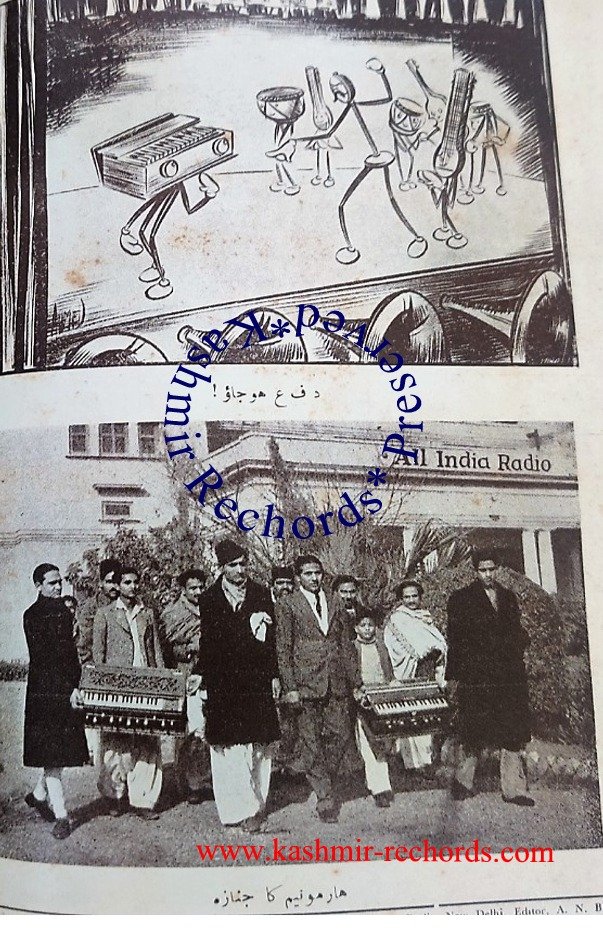
(Kashmir Rechords Exclusive)
Once upon a time, precisely in 1915, India was a leading producer of the harmonium! Yet, a quarter-century later, it became `untouchable’, so much so that All India Radio ( later called Akashvani) had to ban it in 1940 and the instrument, with a formal burial, was removed from all of its studious located in undivided India
John Foulds, who headed the Western music wing of All India Radio during its earlier days, believed the harmonium was mute on microtones that were so essential to Indian classical. Lionel Fielden, India’s first broadcasting chief on the request of so many Indian musicians, had to ban the harmonium in 1940 as he too had felt that it (harmonium) was not suitable to the tonal inflections of Indian classical music

AIR banished harmonium on March 1, 1940
Soon after Fielden ordered to ban harmonium, this keyboard instrument was banished and literary thrown away from the studios. Its last rites were symbolically performed at All India Radio Lahore by laying it to rest. Some newspapers of that era, also came out with cartoons and sketches, with other musical instruments telling harmonium “Dafa Ho jao”-(Go to the Hell)
Records available with www.kashmir-rechords.com reveal that historian Ananda Coomaraswami and even Jawaharlal Nehru as a freedom fighter too had found the harmonium `un-Indian’. Thus, the ban on the instrument sustained even after India’s Independence owing to the attitude of Information and Broadcasting Minister BV Keskar, a student of scholarly vocalist VN Bhatkhande. During the Indian independence Movement, both British and Indian scholars condemned the harmonium for embodying an unwelcome foreign musical sensibility
Popularity of Harmonium
Harmonium, developed by French inverter was once very popular musical instrument in the mid-19th century. Considered a cheaper and more durable alternative to organs and harpsichords, as the latter two often finished the long voyage east warped and unplayable, Indian craftsmen had quickly learned to manufacture harmoniums, and soon their compatriots incorporated the instrument into performances of Indian classical music. In comparison to traditional instruments, the harmonium was easy to tune and a cinch to learn to play. However, as the harmonium became a target of `anti-colonialists’, All-India Radio, the influential state-run broadcaster had to ban it from its programs.
Lifting of ban on Harmonium
The ban was loosened in 1970, after critics argued that the harmonium “should not be treated as an ‘untouchable.’
As elites have struggled to cleanse modern Indian music of what they argue is a “foreign” intruder, the masses have used the harmonium as a gateway to an understanding of their musical heritage. Critics opined that harmonium was considered well suited to teaching the fundamentals of Indian musical grammar and to accompanying choral groups—thus needed recognition and not the ban.
Today, the harmonium in India thrives in a range of systems: Hindustani, Carnatic, Qawwali, Ghazal, Bhajans, Church choir and Sikh Gurbani besides several traditional and folk music. Even so, solo harmonium concerts continue to be rare on AIR.